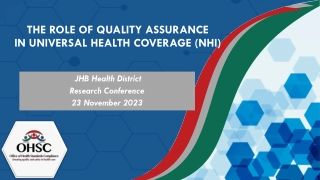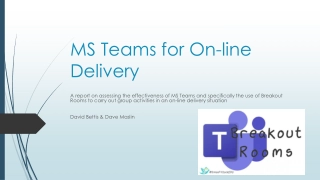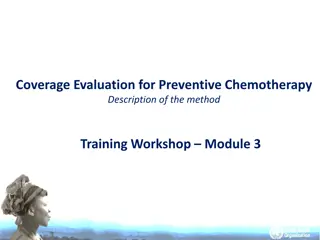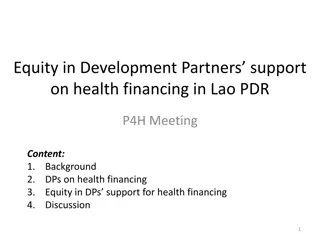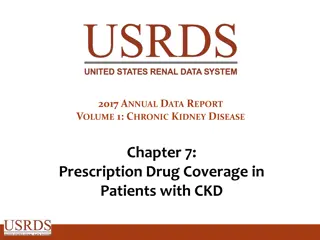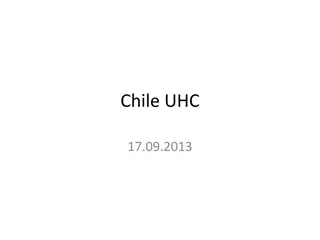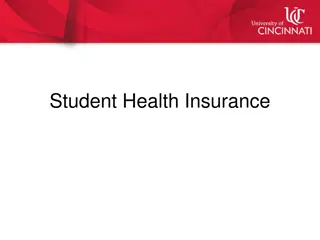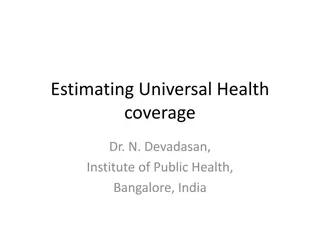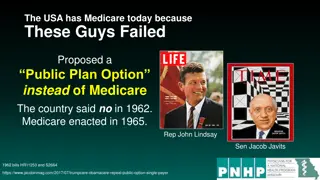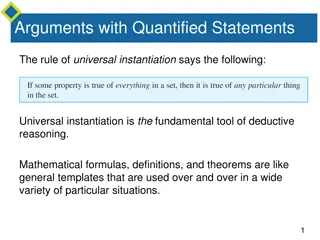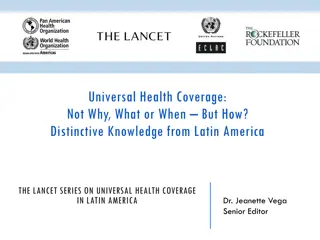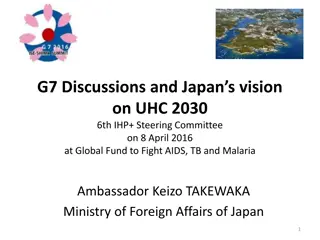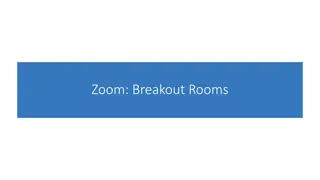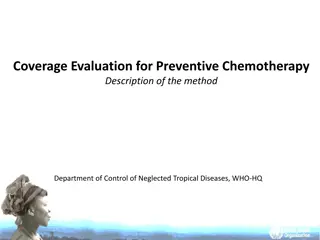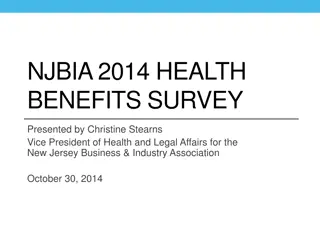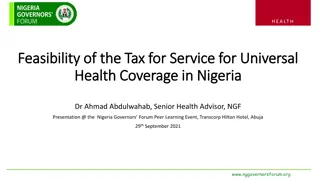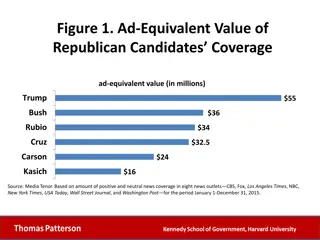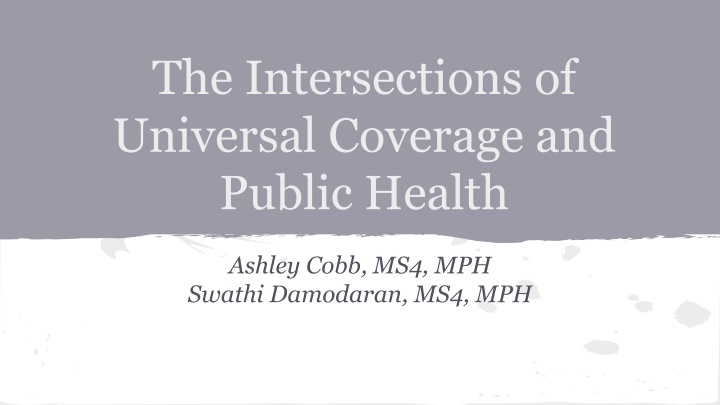
Exploring the Intersections of Universal Coverage and Public Health
Discover the history, definitions, and importance of universal health coverage, with insights on its significance, current status, and challenges. Learn about key events shaping universal coverage, as well as its impact on public health and global equity.
Download Presentation

Please find below an Image/Link to download the presentation.
The content on the website is provided AS IS for your information and personal use only. It may not be sold, licensed, or shared on other websites without obtaining consent from the author. If you encounter any issues during the download, it is possible that the publisher has removed the file from their server.
You are allowed to download the files provided on this website for personal or commercial use, subject to the condition that they are used lawfully. All files are the property of their respective owners.
The content on the website is provided AS IS for your information and personal use only. It may not be sold, licensed, or shared on other websites without obtaining consent from the author.
E N D
Presentation Transcript
The Intersections of Universal Coverage and Public Health Ashley Cobb, MS4, MPH Swathi Damodaran, MS4, MPH
Overview Universal Health Coverage History, Definition, Goals Public Health Definition, Goals Complementary Systems Public Health in Practice
Universal Coverage The goal of universal coverage is to ensure that all people obtain the health services they need without suffering financial hardship when paying for them - WHO1 Access Affordable Quality Capacity
History 1883: The Bismarck Model 1945: End of WWII 1948: WHO Constitution 1978: Declaration of Alma Ata 1980s: HIV/AIDs outbreak 2005: World Health Assembly http://www.rockefellerfoundation.org/uploads/files/23e4426f-cc44-4d98- ae81-ffa71c38e073-jesse.pdf
Recent History 2010: WHO Report 2012: - Lancet Series - WHA 2013: - Framework Convention on Global Health - World Bank UHC Study Series 2014: Toward Universal Coverage by 2030
Margaret Chan on Universal Coverage- The single most powerful concept that public health has to offer ..Universal coverage is the best way to cement health gains made during the previous decade. It is a powerful social equalizer and the ultimate expression of fairness
Current Status Source: The Atlantic, 2012
Universal Coverage in the US: A Brief Look 1960s 1880s-Medicare 1901-1909 1930s 1883-1912 1915: AALL Bill 1940s 2012: ACA PNHP website: http://www.pnhp.org/facts/a-brief-history-universal-health-care-efforts-in-the-us
Tools of Public Health The science of protecting and improving the health of families and communities through promotion of healthy lifestyles, research for disease and injury prevention, and detection and control of infectious diseases - CDC3 Research Policy Education Services
Universal Coverage Public Health What are the core values?
Margaret Chan...again: "Universal health coverage is one of the most powerful social equalizers among all policy options. It is the ultimate expression of fairness," - Margaret Chan, WHO Director-General Quoted on Tuesday at a two-day conference on universal health coverage, Singapore.
Single-Payer and Equity Increased access for primary care services, but not specialty care5, 6 Socioeconomic differences in access Education-based inequities7 Geographic differences in access to resources remain8
How Can Public Health Fill the Equity Gap?
Public Health in Practice Imagine that you are the Canadian minister of health in Ontario. Everyone in your province has health insurance coverage under the national system. You still find socioeconomic based inequities for specialty care services.
In particular, you find an education- based inequity where those with low levels of education see less ophthalmologists than those with high levels of education7
Improving Eye Health How would you address the inequity? Policies? Programs? Services?
Question: What do you see as the biggest barriers to Universal Coverage in the US? What are the next steps? Future of public health/UHC?
References 1. World Health Organization. (2014). What is universal Coverage? Retrieved on 2/11/15 from http://www.who.int/features/qa/universal_health_coverage/en/. World Health Organization. (2013). WHO: The many paths towards universal health coverage. Retrieved on 2/11/15 from https://www.youtube.com/watch?v=VQ3sHfYzcv8. American Public Health Association. (2014). What is public health? Retrieved on 2/11/15 from https://www.apha.org/what-is-public- health. Centers for Disease Control. (2015). What is Public health? Retrieved on 2/11/15 from http://www.cdcfoundation.org/content/what- public-health. Veugelers PJ and Yip AM. (2003). Socioeconomic disparities in health care use: Does universal coverage reduce inequalities in health? J Epidemiol Community Health 57:424-428. Gusmano MK, et al. (2009). Achieving horizontal equity: must we have a single-payer health system? Journal of Health Politics, Policy and Law 34(4):617-33. Glazier RH, et al. (2009). Universal health insurance and equity in primary care and specialist office visits: a population-based study. Ann Fam Med 7(5):396-405. Kreng VB and Yang C. (2011). The equality of resource allocation in health care under the National Health Insurance System in Taiwan. Health Policy 100(2-3):203-210. 2. 3. 4. 5. 6. 7. 8.

